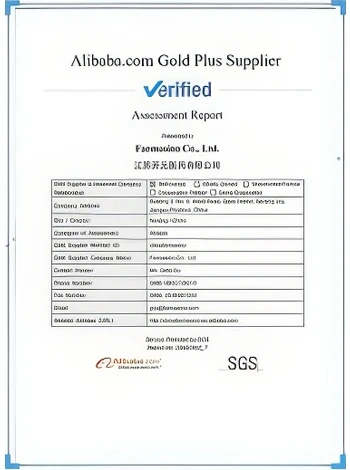



saltpeter chemical formula
The Chemical Composition and Applications of Saltpeter
Saltpeter, commonly referred to as potassium nitrate, has the chemical formula KNO₃. This fascinating compound has played a crucial role in various industries and applications throughout history, especially in agriculture, food preservation, and pyrotechnics. Understanding its chemical structure and properties can provide valuable insights into its wide-ranging uses.
Chemical Structure of Saltpeter
Potassium nitrate consists of three essential elements potassium (K), nitrogen (N), and oxygen (O). In its molecular structure, one potassium ion (K⁺) is bonded to one nitrate ion (NO₃⁻). The nitrate ion is composed of one nitrogen atom covalently bonded to three oxygen atoms. This ionic nature of saltpeter allows it to dissolve readily in water, which is a critical feature for many of its applications.
Historical Significance
Historically, saltpeter has been of immense importance, particularly in the production of gunpowder. Gunpowder, which is a mixture of saltpeter, charcoal, and sulfur, was instrumental in warfare and mining activities. Its explosive properties revolutionized military tactics and construction techniques. Moreover, in the late Middle Ages and the early Renaissance, the extraction of saltpeter from naturally occurring sources led to significant advancements in chemistry and technology.
Agricultural Applications
One of the primary contemporary uses of potassium nitrate is in agriculture. As a high-nitrogen fertilizer, it provides plants with the nutrients necessary for growth and yield improvement. Potassium nitrate is especially effective for crops that require substantial amounts of potassium and nitrogen, such as fruits, vegetables, and tobacco. Its soluble nature makes it easy for plants to absorb, promoting healthier growth and aiding in the overall development of crops.
saltpeter chemical formula

Potassium also plays a critical role in the physiological processes of plants, including photosynthesis, enzyme activation, and water regulation. By ensuring a balanced nutrient supply, farmers can enhance crop resilience against diseases and environmental stressors, ultimately leading to increased agricultural productivity.
Role in Food Preservation
In addition to its agricultural significance, potassium nitrate is utilized in the food industry as a preservative. It inhibits the growth of bacteria, particularly Clostridium botulinum, the bacterium responsible for botulism, thereby extending the shelf life of cured meats. The use of saltpeter in meat curing contributes to the characteristic flavor, texture, and color of products like ham and sausage.
However, it is important to use potassium nitrate judiciously, as excessive consumption can lead to health issues in humans. The regulatory guidelines provided by food safety authorities help to ensure that the levels used in food products remain safe for consumption.
Pyrotechnics and Fireworks
Potassium nitrate is also a critical component in pyrotechnics and the manufacturing of fireworks. When combined with other compounds, it produces vibrant colors and effects when ignited. The explosive nature of saltpeter makes it an essential ingredient in colorful fireworks formulations, allowing for dazzling displays during celebrations and events.
Conclusion
In summary, saltpeter, or potassium nitrate, with its chemical formula KNO₃, is a compound with diverse applications that span from agriculture to food preservation to pyrotechnics. Its historical importance in the development of explosives and its continuing relevance in modern agricultural practices underscore its value in various sectors. As we continue to explore sustainable agricultural practices and safe food preservation methods, the role of potassium nitrate remains significant, showcasing the enduring legacy of this remarkable compound in human civilization. As research evolves, the potential applications of saltpeter will likely expand, offering new opportunities in diverse fields.
-
Why Sodium Persulfate Is Everywhere NowNewsJul.07,2025
-
Why Polyacrylamide Is in High DemandNewsJul.07,2025
-
Understanding Paint Chemicals and Their ApplicationsNewsJul.07,2025
-
Smart Use Of Mining ChemicalsNewsJul.07,2025
-
Practical Uses of Potassium MonopersulfateNewsJul.07,2025
-
Agrochemicals In Real FarmingNewsJul.07,2025
-
Sodium Chlorite Hot UsesNewsJul.01,2025










